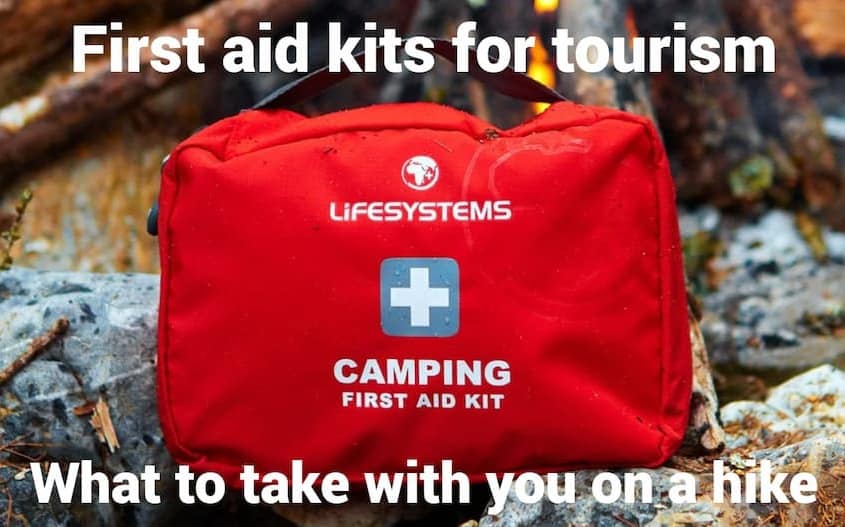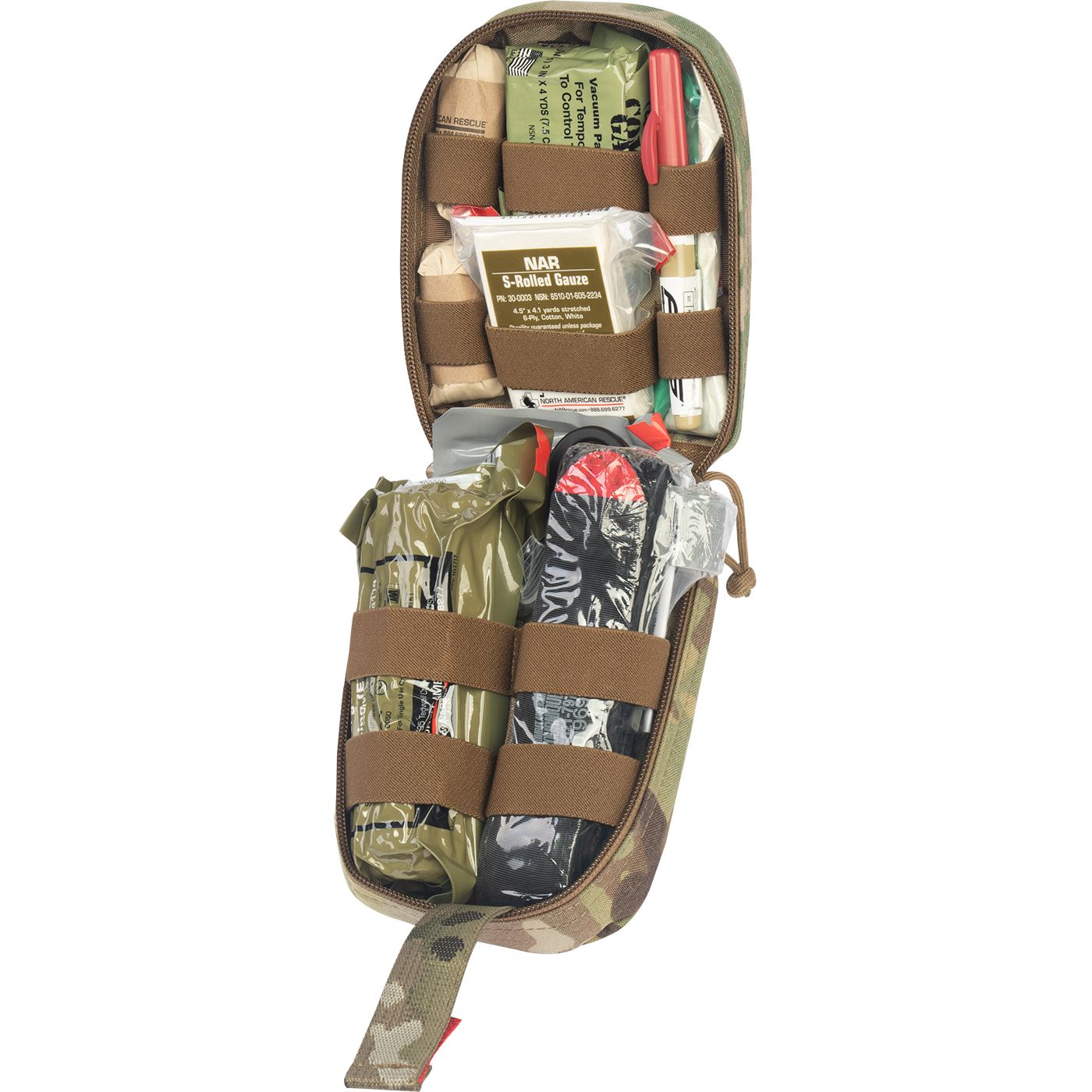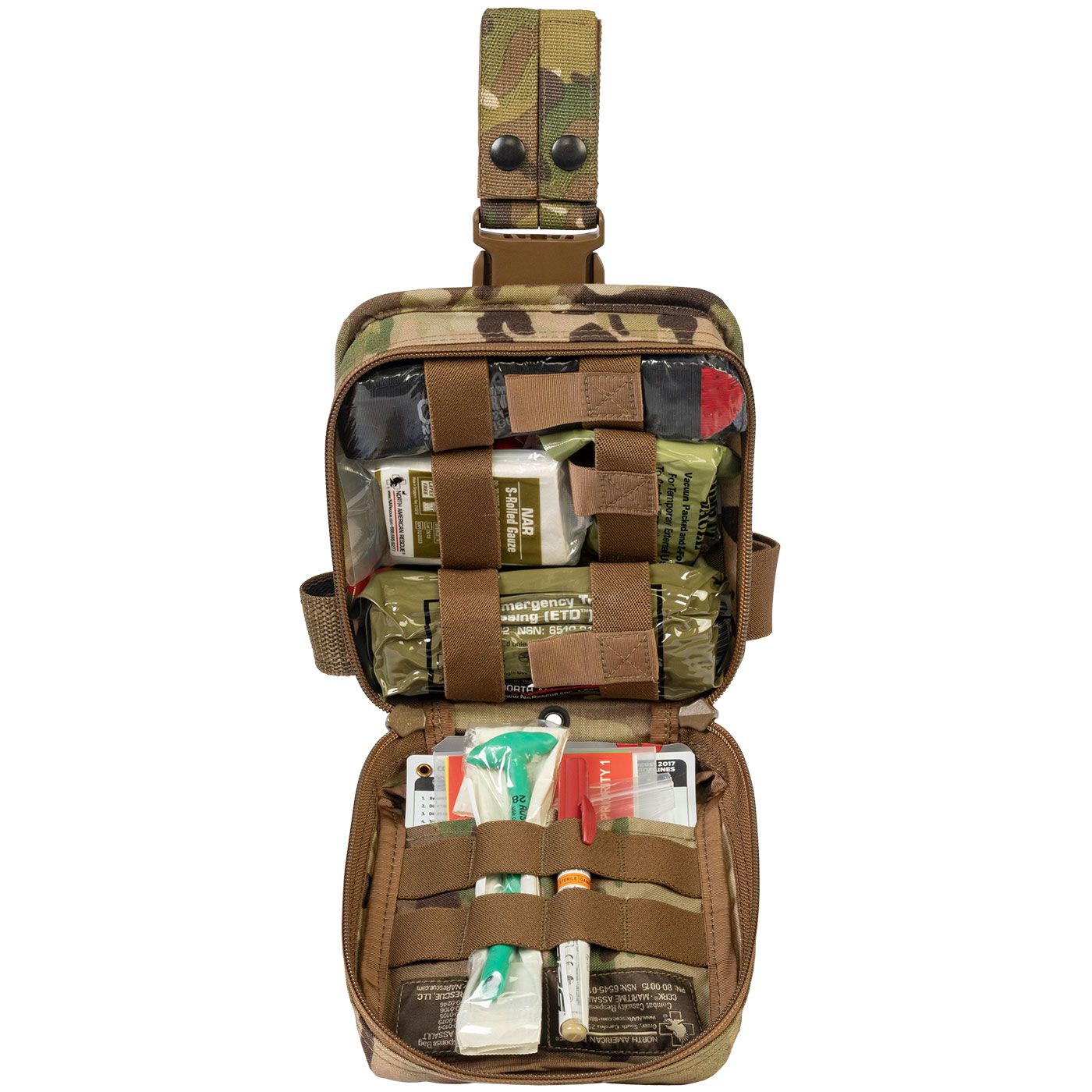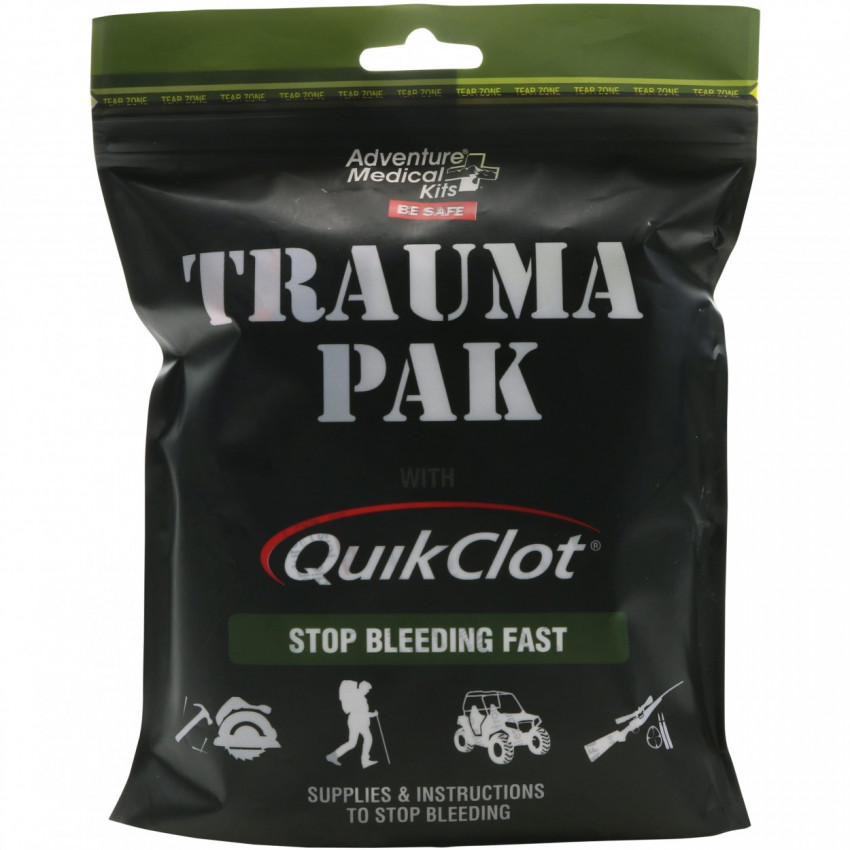First aid kits for tourism: What to take on a hike?
Content
- Choosing a Travel First Aid Kit
- Individual Kit
- Group
- First Aid
- For a Child
- Rules for Assembling a First Aid Kit
- Packaging Requirements
- Preparing Medications
- Ready-Made First Aid Kits for Tourism

Tourism is a wonderful way to relax, see new places, get to know yourself and the world. However, along with adventures, inconveniences can arise: injuries, illnesses, allergies, poisonings. To be prepared for any situation, it is essential to have a first aid kit that meets your needs and the conditions of the hike. In this article, we will explain how to choose and assemble a travel first aid kit, and provide examples of ready-made kits for different types of tourism. You can also learn about tactical first aid kits and their uses.
Choosing a Travel First Aid Kit
A travel first aid kit is not just a collection of medicines; it is a comprehensive first aid tool that takes into account many factors.
Location. Depending on where you plan to travel, you may face various risks: insect bites, snake bites, encounters with animals, poisoning by plants, infections, hypothermia, overheating, sunburns. Therefore, choose a first aid kit that includes remedies for these dangers and learn how to use them.
Traveler's health. If you have chronic illnesses, allergies, or an individual intolerance to certain medications, you should carry necessary prescriptions from your doctor, along with a medical card containing your details and contacts. Also, consider your age, gender, physical condition, and body peculiarities.
Number of people. The more people you bring on the hike, the higher the likelihood that someone will need medical assistance. Therefore, choose a first aid kit that has an adequate amount of medicines and materials for all participants, and share responsibility for carrying and using it.
Considering these factors, four main types of travel first aid kits can be identified:
Individual Kit

This kit contains medicines and tools for personal use. It should be compact, lightweight, and easy to carry. The contents of an individual first aid kit may include:
An individual first aid kit is primarily used to treat mild and common illnesses, as well as for prevention and health support. It does not replace medical consultation and assistance in case of serious situations.
Group

This is a first aid kit that contains medicines and tools for shared use by the entire group. It should be spacious, capacious, and accessible to everyone. The contents of a group first aid kit may include:
- Remedies for headaches, fever, muscle, and joint pain (e.g., paracetamol, ibuprofen, aspirin, Nise, Ketanov). The quantity of medications should be sufficient for all participants in the hike.
- Remedies for colds, flu, sore throat (e.g., Theraflu, Fervex, Lazolvan, Hexoral, Lysobact, Ingalipt). The quantity of medications should be sufficient for all participants in the hike.
- Allergy medications (e.g., Suprastin, Diazolin, Cetirizine, Zodak, Erius). The quantity of medications should be sufficient for all participants in the hike.
- Remedies for poisoning and stomach upset. (e.g., activated charcoal, Smecta, Enterosgel, Loperamide). The quantity of medications should be sufficient for all participants in the hike.
- Remedies for insect bites, snake bites, animal bites (e.g., ammonia, Fenistil gel, Hydrocortisone ointment, Antiseptic wipes, Antivenom serum). The quantity of medications should be sufficient for all participants in the hike.
- Tools for disinfection and wound treatment (e.g., iodine, brilliant green, hydrogen peroxide, chlorhexidine, Betadine, Levomekol, Panthenol, bandages, plasters, cotton, cotton swabs). The quantity of medications should be sufficient for all participants in the hike.
- Tools for sun protection, cold protection, wind protection (e.g., sunscreen, lip balm, hand cream, sunglasses, hat, gloves). The quantity of medications should be sufficient for all participants in the hike.
A group first aid kit is mainly used for treating and preventing common illnesses that may occur in any participant of the hike. It does not replace individual first aid kits, which each participant should have.
First Aid

This is a first aid kit that contains medicines and tools for providing first aid in case of serious injuries, bleeding, shock, respiratory and cardiac arrest. It should be easily accessible, labeled, and include usage instructions. The contents of a first aid kit may include:
- Tools to stop bleeding (e.g., hemostatic pads, tourniquet, hemostatic gel, antiseptic wipes, sterile bandages, plaster, scissors).
- Tools for immobilization and transportation of the injured (e.g., splints, blanket, blanket, stretcher, fixing bandages, plaster).
- Tools for resuscitation (e.g., cardiopulmonary resuscitation (CPR), artificial lung ventilation (ALV), defibrillator, adrenaline, atropine, cordiamine, ammonia).
- Tools to relieve shock (e.g., analgesics, sedatives, anti-shock drugs, reopolyglukin, saline solutions, glucose, vitamins).
- Tools for pain relief (e.g., Analgin, Ketorol, Tramadol, Promedol, Morphine, Novocain, Lidocaine).
A first aid kit is mainly used to provide assistance in case of emergencies that threaten the life and health of the injured. It does not replace qualified medical assistance and hospitalization.
For a Child
This is a first aid kit that contains medicines and tools for caring for a child during a hike. It should be safe, child-friendly, and contain medications suitable for a child's body. The contents of a child's first aid kit may include:
- Remedies for headaches, fever, muscle, and joint pain (e.g., paracetamol, ibuprofen, Nurofen, Efferalgan).
- Remedies for colds, flu, sore throat (e.g., Theraflu, Fervex, Lazolvan, Hexoral, Lysobact, Ingalipt).
- Allergy medications (e.g., Suprastin, Diazolin, Cetirizine, Zodak, Erius).
- Remedies for poisoning, stomach upset, constipation (e.g., activated charcoal, Smecta, Enterosgel, Loperamide, Duphalac, Microlax).
- Remedies for insect bites, snake bites, animal bites (e.g., ammonia, Fenistil gel, Hydrocortisone ointment, Antiseptic wipes, Antivenom serum).
- Tools for disinfection and wound treatment (e.g., iodine, brilliant green, hydrogen peroxide, chlorhexidine, Betadine, Levomekol, Panthenol, Bise, bandages, plasters, cotton, cotton swabs).
- Tools for sun protection, cold protection, wind protection (e.g., sunscreen, lip balm, hand cream, sunglasses, hat, gloves).
- Individual medications prescribed by a doctor (e.g., antibiotics, hormonal drugs, anti-inflammatory, cardiac, antidepressants).
A child's first aid kit is mainly used for treating mild and common illnesses, as well as for prevention and health support for the child. It does not replace medical consultation and assistance in case of serious situations.
Rules for Assembling a First Aid Kit
When assembling a first aid kit, it is worth following some rules that will help you choose necessary and effective medications and also keep them in proper condition.
Choose fast-acting and versatile medications. In a hike, there is no time for prolonged treatment and experimentation with different drugs. Therefore, it is advisable to have medications that act quickly and effectively, and are suitable for treating various symptoms and conditions. For example, paracetamol can relieve headache, fever, inflammation, and ibuprofen can also alleviate muscle and joint pain.
Consider the quantity of medications per person. When selecting medications, consider how many are needed per person for the entire duration of the hike, and also have a reserve for unforeseen situations. For example, if you bring antibiotics, you should have enough for the full course of treatment, not just for the first few days.
Check the expiration date and storage conditions of medications. Before the hike, check whether the medications you bring have expired and whether they comply with the storage conditions that will be present during the hike. For instance, some medications may lose their effectiveness at high temperatures, humidity, or exposure to light. Also, it is advisable to avoid medications with complex dosage forms, such as ampoules, drops, syrups, as they may break, spill, or spoil.
Packaging Requirements
The packaging for a first aid kit should be designed to provide protection for medications against external influences and ensure convenience and accessibility for their use. Here are some characteristics of proper packaging for storing medications:
- Durable. The packaging should be resistant to mechanical damage, such as impacts, friction, and punctures. For example, you can use plastic or metal containers that do not break or deform.
- Airtight. The packaging should be impermeable to water, air, dust, and dirt. For example, you can use sealing lids, locks, fasteners, and bags with drainage valves.
- Lightweight. The packaging should be lightweight to avoid burdening your backpack and creating additional strain on your body. For example, you can use plastic or aluminum containers that are not heavy but are sturdy and airtight.
- Compact. The packaging should be compact to take up minimal space in your backpack and not hinder the placement of other items. For example, you can use collapsible or modular containers that can be easily assembled and disassembled, or compressible and tieable bags.
- Label. The packaging should have a label so that you can easily find the required medication or tool, and know what it contains, how to use it, and when to take it. For example, you can use stickers, labels, markers, or color codes.
Preparing Medications
When preparing medications for a trip, it's essential to follow some recommendations to preserve their quality, effectiveness, and safety. Separate medications by purpose and type to avoid confusion, errors, and unwanted reactions during use. For example, divide medications into individual, general, first aid, for children, and also into tablets, capsules, ointments, and solutions.
Package medications in separate containers to keep them from mixing, spilling, or leaking. For example, you can pack medications in plastic or glass bottles, tubes, jars, or bags with drainage valves. Mark medications by dosage and time of intake to adhere to the correct treatment regimen and avoid overdosing or underdosing. For example, use color-coding, numbering, lettering, symbols, and write the dose, frequency, and time of intake on them.
Ready-Made First Aid Kits for Tourism
If you prefer not to assemble a first aid kit yourself, you can purchase ready-made options on the tacmed.ua website, which already contain the necessary medications and tools for various types of hikes.
Active Recreation First Aid Kit. This first aid kit is suitable for hikes in moderate climates, with low physical exertion and risks. It contains medications and tools for treating and preventing common illnesses, such as colds, headaches, allergies, stomach upset, and insect bites. It also includes means for disinfection and wound treatment, as well as protection from the sun, cold, and wind.
Extreme Recreation First Aid Kit. This first aid kit is suitable for hikes in extreme climates, with high physical exertion and risks. It contains medications and tools for providing first aid in case of serious injuries, bleeding, shock, respiratory and cardiac arrest. It also includes means for treating and preventing specific diseases, such as altitude sickness, tropical infections, poisoning, and dehydration.
Family Recreation First Aid Kit. This first aid kit is suitable for hikes with children who require special care and attention. It contains medications and tools for a child's body, suitable for treating and preventing childhood illnesses, such as colds, flu, sore throat, allergies, stomach upset, and insect bites. It also includes means for disinfection and wound treatment, as well as protection from the sun, cold, and wind.
These are examples of ready-made first aid kits for tourism that you can purchase on our online store. However, you can also create your own first aid kit based on your needs, hiking conditions, and doctor's recommendations. The main thing is not to forget about safety and the health of yourself and your companions. Be cautious, and we wish you a great vacation!
